
Driving consistent, high quality traffic to your website is the foundation of digital growth. More visitors mean more potential customers, greater brand visibility, and a stronger bottom line. But with countless channels and tactics available, knowing where to start can feel overwhelming. The key is not just about getting more visitors, it’s about attracting the right visitors and building a sustainable engine for growth by diversifying your traffic sources. Increasing traffic to your website requires a multi-faceted approach that includes foundational technical SEO, high-value content that matches user search intent, and strategic promotion. This guide breaks down these essential steps, moving from foundational strategy to actionable execution.
Set Your Foundation: Goals, Audience, and Measurement
Before you can effectively increase traffic to your website, you need a clear plan. Jumping straight into tactics without a solid foundation is like building a house on sand. Start by defining what success looks like and who you’re trying to reach.
Define Your Goals: What do you want visitors to do once they arrive? Your goal could be making a purchase, filling out a contact form, or signing up for a newsletter. Clear goals will shape your entire strategy.
Understand Your Audience: Who are you trying to attract? Develop detailed buyer personas to understand their pain points, interests, and where they spend their time online. This knowledge is crucial for creating content and choosing the right channels.
Set a Budget: Determine what you can realistically invest in both time and money. While many traffic strategies are low cost, some channels require a financial commitment to see results. If you’re on a tight budget, explore low-cost SEO services that maximize rankings without overspending.
Measure Everything: The only way to know if your efforts are working is to track your progress. Setting up analytics from day one is non negotiable.
Know Your Channels: Organic vs. Paid
Website traffic generally falls into two main categories: organic and paid. Understanding the difference is fundamental to learning how to increase traffic to your website effectively.
Organic Traffic refers to visitors who find your site through unpaid sources, primarily search engines like Google. The practice of improving your visibility in search results is called Search Engine Optimization (SEO). SEO is a long term strategy that builds authority and trust, delivering compounding returns over time. In fact, SEO drives over 1,000% more traffic than organic social media.
Paid Traffic comes from any channel where you pay for placement, most commonly through pay per click (PPC) ads on search engines (like Google Ads) or social media platforms. Paid traffic offers immediate visibility and highly targeted campaigns but requires an ongoing budget.
A powerful strategy often involves using both. Paid ads can drive initial traffic and provide valuable keyword data while your long term SEO efforts gain momentum.
Get Your House in Order: Analytics, Performance, and UX
Your website itself is a critical factor in attracting and retaining visitors. A slow, confusing, or broken site will send potential customers running to your competitors, no matter how good your marketing is. If you’re unsure what to tackle first, run a technical SEO audit to prioritize fixes.
Analytics and Search Console
First, set up Google Analytics and Google Search Console. Analytics shows you who is visiting your site, how they got there, and what they do once they arrive. Search Console is a free tool from Google that helps you understand your performance in Google Search, showing you which queries bring users to your site and if there are any technical issues holding you back. This data provides the baseline for understanding how to increase traffic to your website.
Website Performance and User Experience (UX)
Website performance, particularly page speed, is a confirmed ranking factor for Google. A one second delay in mobile load times can impact mobile conversions by up to 20%. Use Google’s PageSpeed Insights tool to check your performance and get actionable recommendations.
A great User Experience (UX) keeps visitors engaged. Ensure your site is:
Mobile Friendly: A majority of web traffic now comes from mobile devices, so a responsive design is essential.
Easy to Navigate: Visitors should be able to find what they’re looking for within a few clicks. A clear menu structure and logical information architecture are key.
Visually Appealing: A clean, professional design builds trust and makes your content more readable.
For many businesses, managing the technical side of SEO can be a major hurdle. Services like Rankai combine AI efficiency with human oversight to handle these technical fixes, ensuring your site is always optimized for performance.
Content is the Engine: Create Standout, Link-Worthy Assets
Content is the fuel for nearly every traffic generation strategy. High quality, relevant content is what earns high rankings in Google, gets shared on social media, and attracts valuable backlinks. The first page of Google captures at least 71% of all web traffic clicks.
To create content that drives traffic, focus on:
Keyword Research: Identify the terms and questions your target audience is searching for. This is the starting point for any successful content strategy focused on how to increase traffic to your website.
Creating Value: Your content must be genuinely helpful, informative, or entertaining. Aim to create the best resource on the web for your chosen topic.
Optimizing for SEO: Ensure your content is structured correctly with proper headings, includes your target keyword naturally, and has a compelling meta description to encourage clicks from search results.
Consistency: Regularly publishing fresh content signals to search engines that your site is active and relevant. It also gives visitors a reason to come back.
Producing high volumes of optimized content consistently is a common pain point for businesses. This is where AI powered solutions can be a game changer, delivering optimized pages at a scale that traditional methods can’t match. Find out how Rankai produces 20+ optimized pages per month for a flat fee.
Top 15 Tips: How to Increase Traffic to Website
Now that you understand the foundational elements, let’s explore the specific tactics that will bring a steady stream of visitors to your website. This comprehensive list combines strategies from content marketing and search engine optimization to paid advertising and customer retention. These methods are grouped together because a multi-faceted approach is crucial for building sustainable and high-quality traffic in today’s competitive digital landscape.
01. Create high-quality, helpful content
Publishing genuinely useful content earns visibility, trust, and links. Each comprehensive page can rank for multiple queries, attract shares, and keep working long after it’s published. For startups and SMBs, this is an efficient, compounding engine: answer real questions thoroughly, and qualified visitors naturally follow.
Run this play
Map audience questions and high-intent keywords via competitor research and Google Search Console, and group them into a keyword cluster.
Write complete, original guides with clear headings, lists, visuals, and plain language.
Nail on-page SEO: focused title, H1, clean URL, descriptive alt text, fast load.
Publish consistently (content calendar) and interlink new posts to relevant evergreen pages.
Refresh top posts every 3 to 6 months to keep facts, examples, and links current.
Real-world win
A local bakery launched detailed baking guides. Optimized posts hit page one for niche terms and doubled organic visits within a quarter.
Scorecard
GSC: Clicks, Impressions, CTR, Avg. Position (weekly)
GA: Organic sessions, Conversions (monthly)
Review at 30/90 days; improve what stalls, double down on winners.
02. Search engine ads (PPC)
Paid search places you atop results for high-intent queries the moment you launch. It’s perfect for testing offers, fueling launches, and driving immediate, targeted traffic while SEO spins up. Tight targeting and pay-per-click pricing let SMBs control spend and scale what converts.
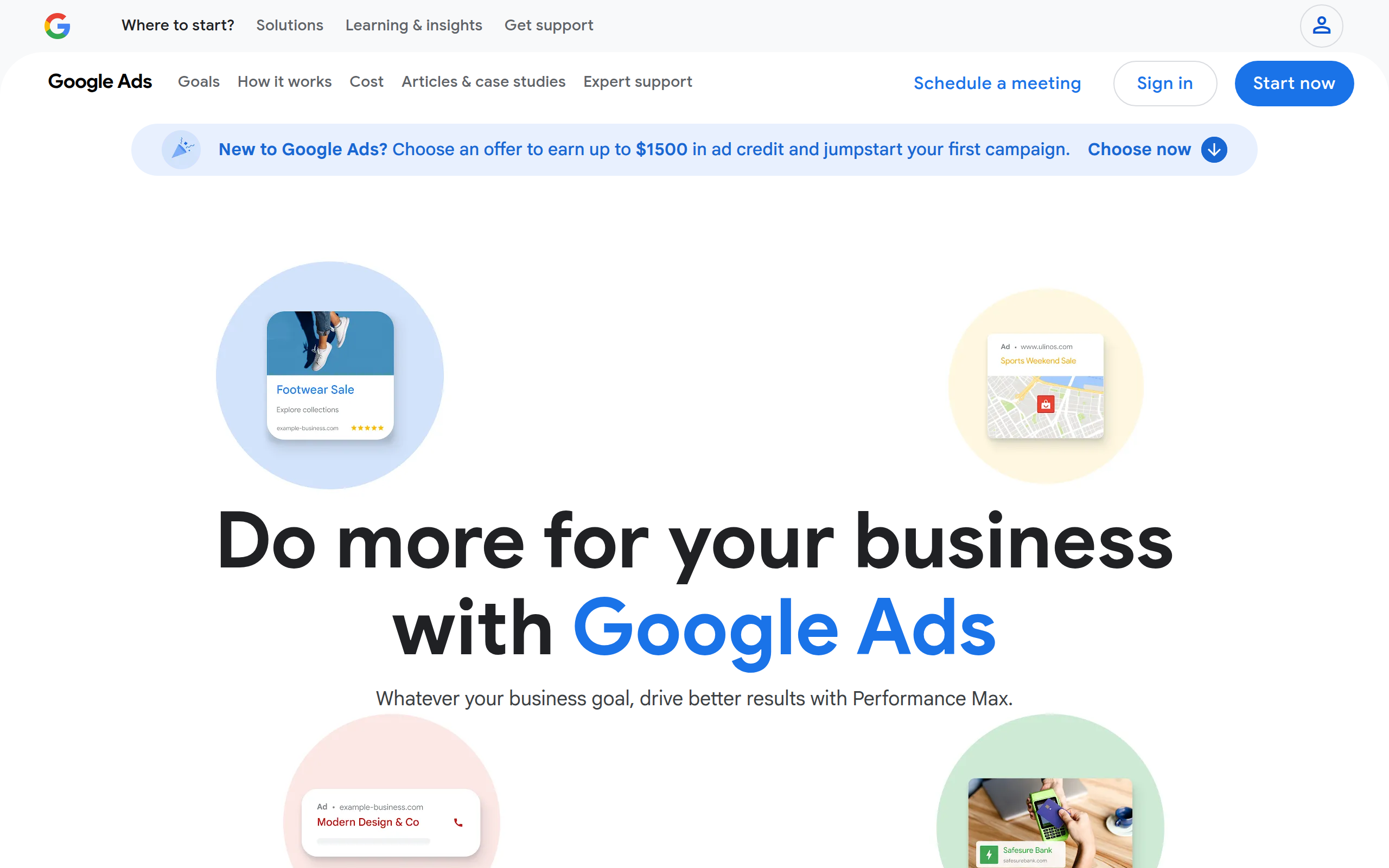
Run this play
Create a Search campaign with a clear goal (traffic or conversions) and realistic daily budget.
Use Keyword Planner to group high-intent terms into tight ad groups.
Write direct, benefit-led copy with a strong CTA; add sitelinks and callouts.
Send clicks to fast, relevant landing pages; enable conversion tracking.
Start with a test budget; review search terms, add negatives, and tune bids weekly.
Real-world win
A new online pet store bid on “organic dog food delivery,” generating same-day sales while organic rankings ramped.
Scorecard
Weekly: Clicks, CTR, CPC
30 to 90 days: Conversions, CPA
Optimize by shifting spend to keywords and ads with the best ROI.
03. Google Ads
Google Ads captures demand the instant people search for your solution, delivering qualified traffic at speed. It’s ideal for launches, promotions, and market testing, especially when you need data fast to inform broader growth bets.

Run this play
Connect analytics and set up conversion tracking before launch.
Use Keyword Planner; group themes, start with exact/phrase match.
Align ad copy to landing page messaging to lift Quality Score and CVR.
Set a daily budget; add negatives to filter irrelevant traffic.
Review weekly; pause weak performers, push spend to proven winners.
Real-world win
An online retailer targeted “organic skincare” and saw 3× more qualified visits in 30 days.
Scorecard
Weekly: Clicks, Impressions, CTR, Avg. CPC
30 to 90 days: Sessions, Conversion Rate, CPA
04. Perform keyword research
Keyword research aligns your pages with what people actually search, unlocking relevance, rankings, and predictable traffic. For SMBs, it’s a foundation that compounds. The right terms inform content, product pages, and navigation, lifting visibility across the site. For tool selection, see our guide to AI keyword research tools.
Run this play
List core topics; use Keyword Planner for volumes and difficulty.
In GSC, find queries with impressions but low clicks for quick wins.
Analyze competitors’ top terms to spot gaps you can outrank.
Prioritize by intent; target long-tail, high-intent phrases first.
Revisit monthly to expand targets and refine priorities.
Real-world win
A bakery targeted “gluten-free wedding cupcakes Boston,” built a dedicated page, and quickly attracted highly qualified local buyers.
Scorecard
GSC: Clicks, Impressions, CTR, Avg. Position (weekly)
GA: Sessions from organic, Conversion rate
Review at 7/30/90 days; iterate on terms that stall.
05. Understand search intent
Rankings improve when your page exactly matches what the searcher wants: learn, compare, or buy. For startups, intent-aligned content reduces bounce, boosts CTR, and attracts visitors primed to act, turning traffic into revenue. Start with this guide to understanding keyword intent.
Run this play
Scan the top 3 to 5 results to identify the dominant content type.
Map keywords to intent: informational, commercial, transactional, navigational.
Match format to intent: blog for “how to,” comparisons for “best,” landing pages for “buy.”
Create templates per intent to speed consistent production.
Audit high-bounce pages for intent mismatch and fix accordingly.
Real-world win
An e-commerce brand shifted a category page from long-form text to a shoppable grid, lifting conversions by 150%.
Scorecard
GSC: Clicks, CTR, Avg. Position (weekly)
GA: Bounce rate, Time on page, Conversion rate
Review at 30/90 days and rewrite mismatched pages.
06. Target long-tail keywords
Long-tail phrases face less competition and signal higher intent, making them gold for SMBs. Individually small, together they compound, earning rankings faster and conversions from people searching for exactly what you offer.
Run this play
Mine autocomplete, People Also Ask, and GSC for specific queries.
Prioritize phrases that indicate readiness to act or research a precise solution.
Publish focused posts, FAQs, or service pages that answer completely.
Optimize titles, headers, URL, and meta; ensure mobile speed is solid.
Review after 30 to 60 days; refine content to better match intent.
Real-world win
An eco-friendly bottle startup targeted “BPA-free insulated water bottles for hiking,” quickly ranking and converting high-intent traffic.
Scorecard
GSC: Clicks, Impressions, CTR, Avg. Position (weekly)
GA: Organic sessions, Conversion rate
Assess at 30/90 days and scale what works.
07. Perform on-page SEO
On-page SEO aligns your titles, headings, copy, and media with what users and crawlers expect. It’s a low-cost lever for SMBs: small, targeted tweaks stack up to big visibility gains over time. Use our on-page SEO checklist to cover the essentials.
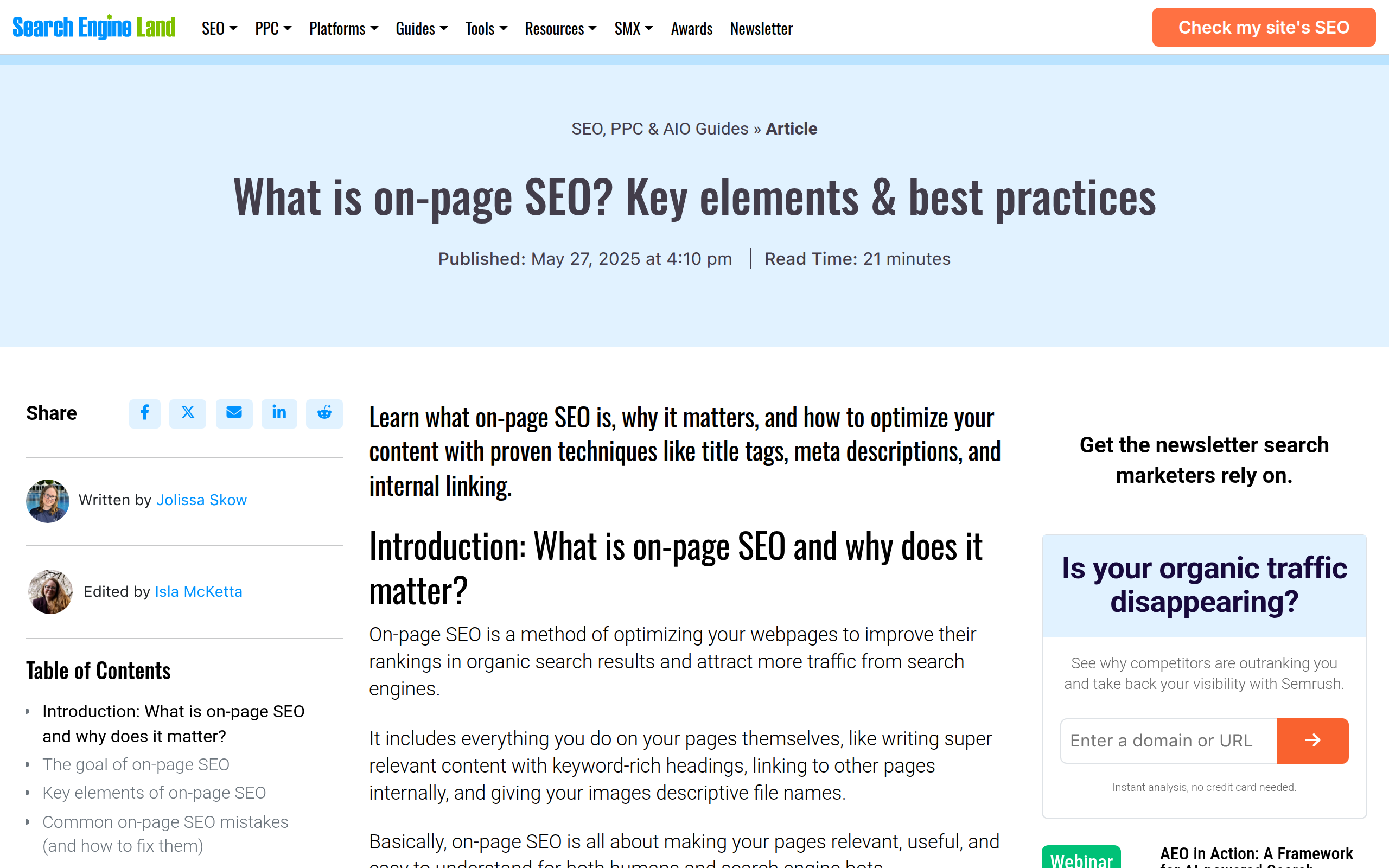
Run this play
Quick win: Update titles (50 to 60 characters) and metas (150 to 160) on your top pages.
Structure: One clear H1; use H2/H3s for logical, scannable sections.
Media: Compress images; add descriptive, keyword-rich alt text.
Internal links: Add 2 to 3 relevant links with descriptive anchors; this guide explains how many internal links per page is ideal.
Iterate: In GSC, fix high-impression, low-CTR pages with sharper snippets.
Real-world win
A bakery added specific dessert keywords to its menu title and H1, lifting clicks and impressions for those terms.
Scorecard
GSC: Clicks, Impressions, CTR, Avg. Position (weekly)
GA: Organic sessions, Conversions (30/90-day trends)
08. Build backlinks
Authoritative backlinks are votes of confidence that elevate your site’s credibility and rankings. They also drive qualified referral traffic. For startups, a focused link strategy accelerates discovery and compounds authority across your domain.
Run this play
Audit your link profile; disavow toxic links via GSC if needed.
Create link-worthy assets: industry data, original research, or definitive guides.
Pitch relevant publications with personalized angles that serve their audience.
List in credible industry and local directories; leverage partnerships.
Real-world win
A bakery earned a link from a popular food blog’s recipe post, spiking referrals and lifting local rankings.
Scorecard
GSC: Clicks, Impressions, Avg. Position (weekly)
GA: Organic sessions, Conversions (30/90 days)
Ahrefs/Moz: New referring domains (monthly)
09. Optimize meta tags
Your title and meta description are the organic ad for each page. Sharper snippets improve CTR, which can boost rankings and traffic without creating new content, an especially high-ROI move for SMBs.
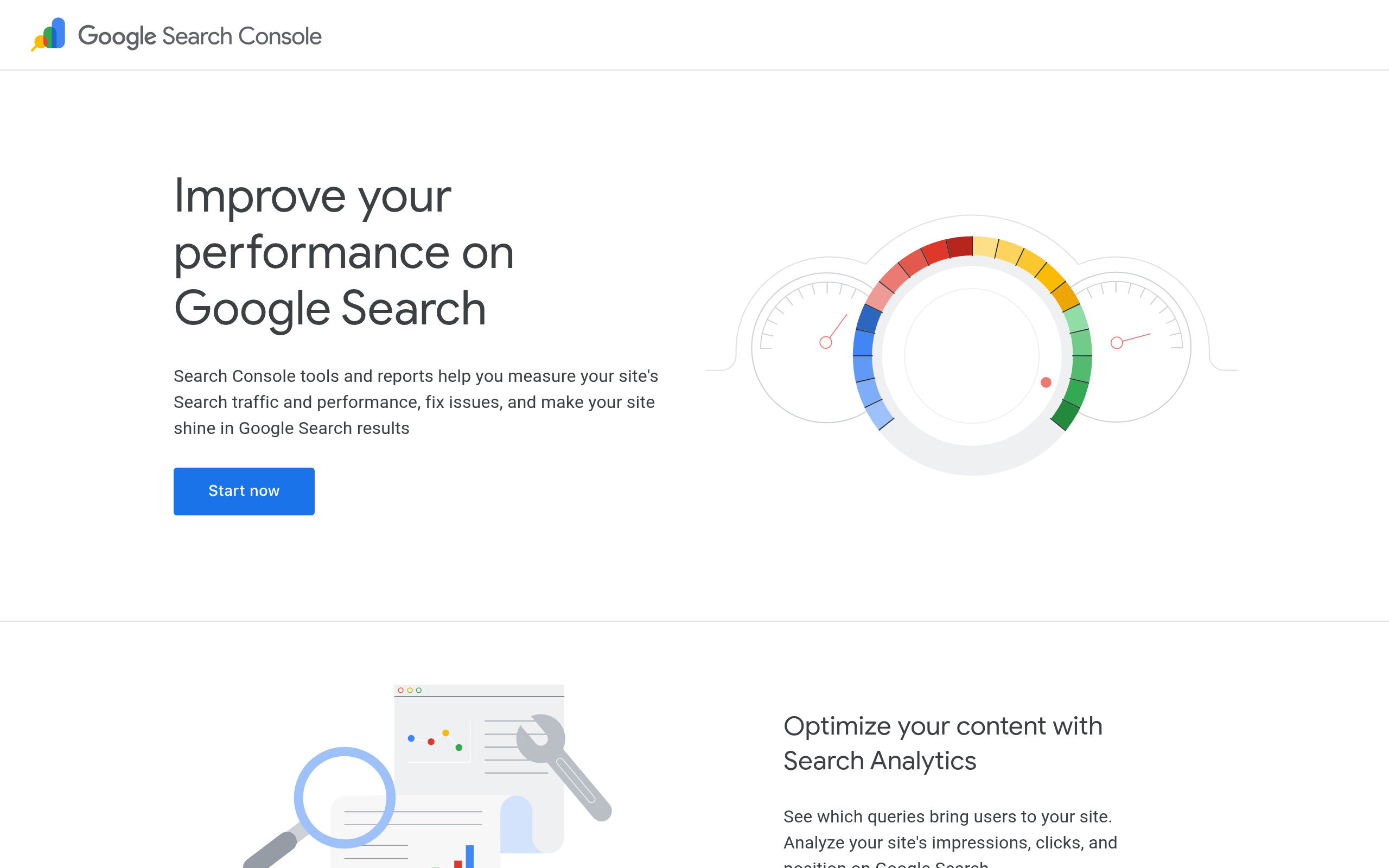
Run this play
In GSC, find high-impression, low-CTR pages; crawl for missing/duplicate tags.
Write unique titles (50 to 60 characters) with the primary keyword up front; brand at end.
Craft compelling metas (approximately 150 to 160 characters) aligned to intent with a clear CTA.
Use CMS templates to scale; request re-crawling for priority pages.
If CTR doesn’t lift in 2 to 4 weeks, test a new angle.
Real-world win
An electronics retailer made a product title more specific and rewrote its meta. CTR jumped 25% post re-indexing.
Scorecard
GSC: Clicks, Impressions, CTR, Avg. Position (weekly)
Analytics: Organic sessions, Conversions (30 to 90 days)
Iterate quarterly on underperformers.
10. Optimize SERP appearance
Rich results make your listings stand out with stars, prices, FAQs, and more, lifting CTR and capturing intent directly in the SERP. It’s a low-cost edge SMBs can use to compete above their weight. Learn more in our practical guide to Google SERP features and how to win them.
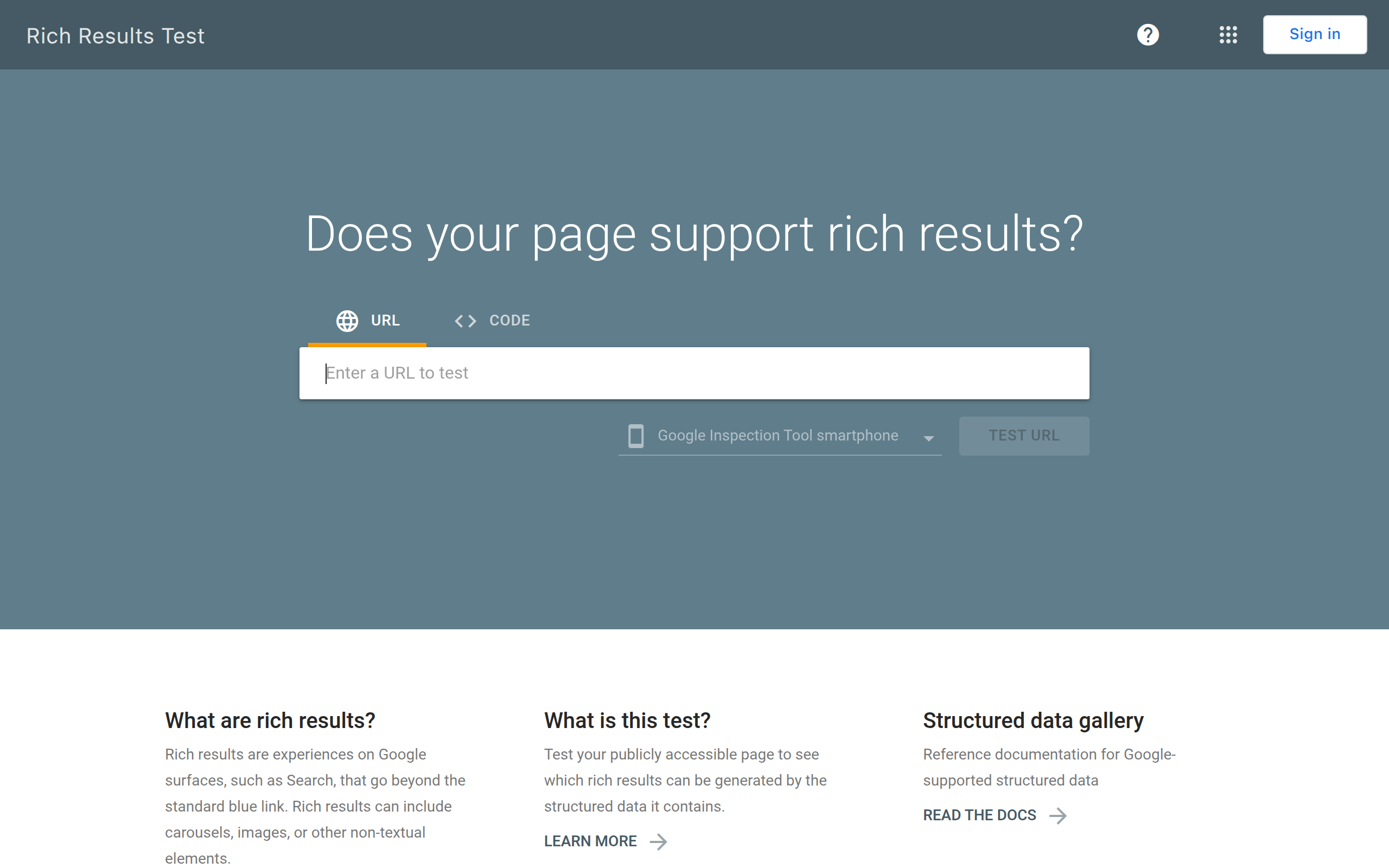
Run this play
Add schema.org markup (Product, FAQPage, etc.). Use Google’s Structured Data Markup Helper to generate JSON-LD and add it to your
<head>.Tighten titles (fewer than 60 characters) and metas (fewer than 160) with a clear value proposition.
Validate with Google’s Rich Results Test; fix any critical errors.
Monitor the Enhancements report in GSC and resolve new issues quickly.
Update schema as content changes; re-validate after edits.
Real-world win
An e-commerce brand added Product schema; star ratings and prices surfaced in results, boosting clicks and sales.
Scorecard
GSC: Clicks, Impressions, CTR, Avg. Position (weekly)
GA: Organic sessions, Conversions (monthly)
Review at 7/30/90 days.
11. Refresh and update old content
Refreshing proven pages signals relevance, restores rankings, and unlocks new queries. For SMBs, it’s the fastest path to lift traffic by optimizing what already has equity before creating from scratch.
Run this play
Identify posts with high impressions but declining clicks (GSC); prioritize posts more than 6 months old.
Update titles, stats, screenshots; add sections/FAQs to cover new questions.
Realign keywords to current intent; rewrite metas; improve readability.
Fix broken links, add new internal links, replace dated images.
Republish, request re-indexing in GSC, and promote via email/social.
Real-world win
A marketing blog refreshed a two-year-old tutorial with new data and visuals, doubling organic clicks and returning to the top 3.
Scorecard
GSC: Clicks, Impressions, CTR, Avg. Position (weekly)
GA: Organic sessions, Conversions (monthly)
Verify gains at 30/90 days.
12. Start a blog
A focused blog compounds reach by adding indexable, keyword-rich pages that answer real customer questions. Each post opens a new door for discovery, and collectively, they build topical authority that lifts the whole site.
Run this play
Set up a CMS (e.g., WordPress) with clean URLs, sitemap, and mobile-first design.
Research topics and long-tail questions tied to your core audience.
Publish 1 to 4 posts/month; start with cornerstone guides on core themes.
Optimize titles, metas, headers, internal links; compress images.
Promote via social, newsletter, and relevant communities to earn links.
Real-world win
A tech provider launched an industry blog and grew monthly visits from 88 to 2,299 in a year, driven by consistent, optimized publishing.
Scorecard
GSC: Clicks, Impressions, CTR, Avg. Position (weekly)
GA: Organic sessions, Conversions (monthly)
Review at 30/90 days; upgrade winners, rewrite laggards.
13. Build a resource center
A resource hub centralizes your best material, signaling depth to search engines and simplifying discovery for users. As you add assets, internal links compound authority, expanding rankings across many related queries.
Run this play
Audit existing content; pick a core theme and map assets to subtopics.
Create a dedicated “Resources” or “Learning Center” with clear categories/filters.
Interlink every asset to the hub and relevant sibling pieces.
Feature the hub in navigation; announce via email and social.
Maintain quarterly: add new content, prune weak assets, fix broken links.
Real-world win
A SaaS company consolidated tutorials into a Learning Center that began ranking for broad industry terms and drove steady organic growth.
Scorecard
GSC: Clicks, Impressions, CTR, Avg. Position (weekly)
GA: Organic sessions, Time on page, Conversions (monthly)
Review at 30/90 days and iterate.
14. Create a free tool
Free tools solve problems instantly, earning links, shares, and repeat visits. They rank for specific utility-driven queries (calculators, generators) and can outperform blog posts as evergreen traffic magnets.
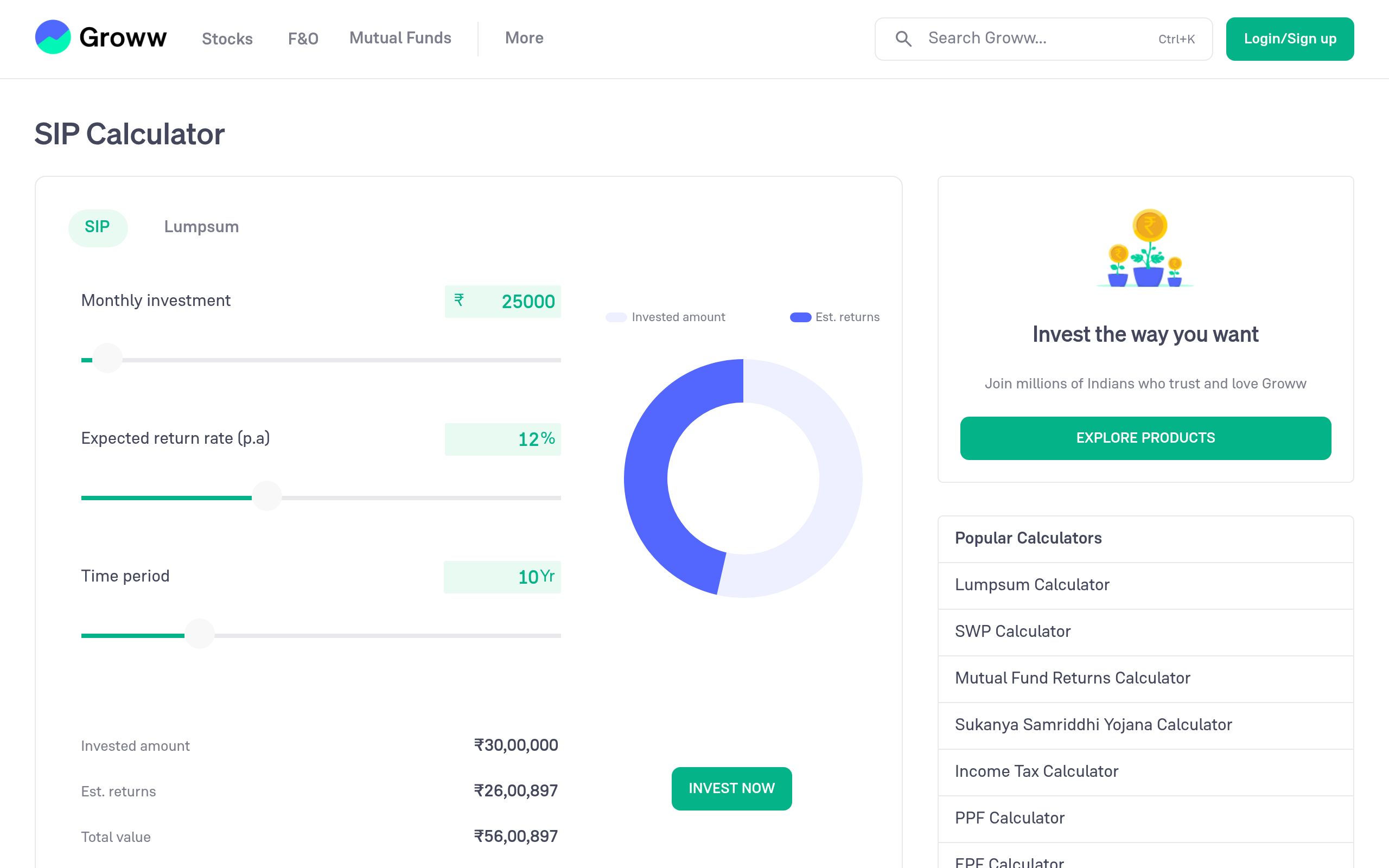
Run this play
Identify recurring audience problems from forums and keyword research.
Build a simple MVP with lightweight HTML/CSS/JS; ship fast.
Launch on a dedicated, optimized page (URL, title, meta).
Add internal links from relevant content; promote via newsletter/social.
Collect feedback to fix bugs, polish UX, and add a subtle CTA.
Real-world win
An investing platform’s SIP calculator attracts 3.5M organic visits/month, eclipsing typical blog performance and fueling conversions.
Scorecard
GSC: Clicks, Impressions, CTR, Avg. Position (weekly)
GA: Sessions, Time on page, Conversions (monthly)
Evaluate at 30/90 days; enhance features that drive use.
15. Email marketing
Email reaches people who asked to hear from you, turning each send into predictable return traffic and revenue. Lists compound over time, and segmentation keeps engagement high, perfect for SMBs seeking efficient, repeatable growth.
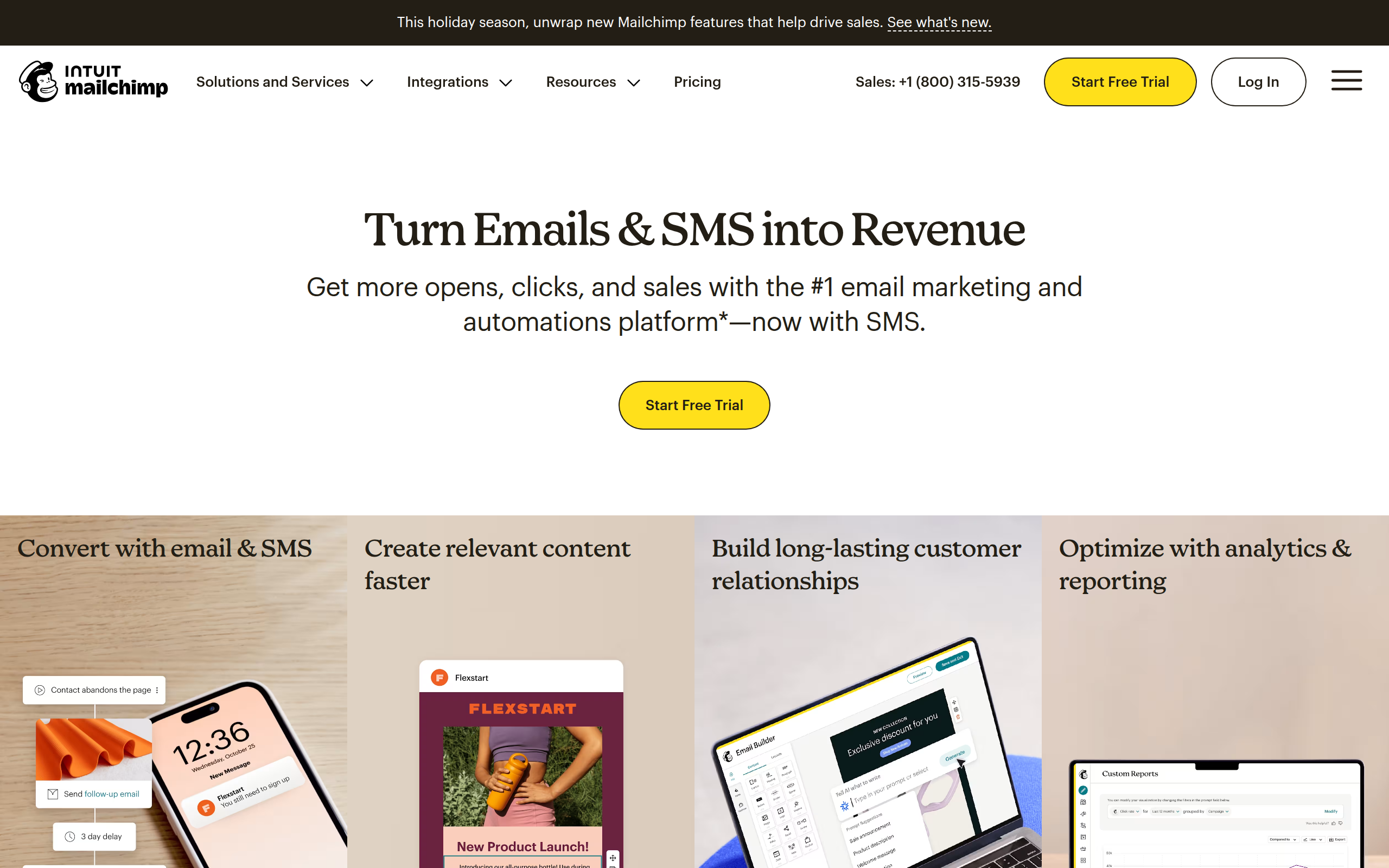
Run this play
Add prominent signup forms with a clear value exchange (discount, guide).
Choose an ESP (e.g., Mailchimp); launch a welcome series linking to cornerstone content.
Set a weekly/biweekly cadence; spotlight new posts, offers, and clear CTAs.
Segment by behavior or lifecycle; personalize to lift engagement.
A/B test subjects, preview text, send times, and layouts; keep it mobile-first.
Real-world win
An online retailer’s weekly product roundup drives traffic surges after each send and reinforces repeat purchase behavior.
Scorecard
Email: Open rate, CTR, Unsubscribes (weekly)
Analytics: Sessions from email, Conversion rate (monthly)
Review at 7/30/90 days; refine segments, cadence, and content.
Execution Roadmap: Start Small and Scale Intelligently
Trying to do everything at once is a recipe for failure. A smarter approach for how to increase traffic to your website is to start with a focused strategy and build from there.
Start with SEO: SEO is the most sustainable, long term driver of traffic. Begin by identifying your core topics and building out foundational content.
Layer in One Channel: Once your content engine is running, pick one additional channel to focus on. This could be a specific social media platform where your audience is active or a small, targeted paid ad campaign.
Analyze and Iterate: Use your analytics to see what’s working. If a piece of content is performing well, create more content around that topic. If a channel isn’t delivering, don’t be afraid to shift your focus. The key is to constantly learn and adapt.
Many businesses struggle because their pages don’t rank quickly. A modern approach involves rapid iteration, like Rankai’s “rewrite until it ranks” workflow, which automatically identifies and improves underperforming content to get it ranking faster.
Conclusion: Commit to a Continuous Process
Learning how to increase traffic to your website isn’t about finding a single magic bullet. It’s about building a resilient, multi channel system that consistently attracts and engages your target audience. Start with a solid foundation, prioritize high quality content, and get your technical house in order. From there, test and scale your efforts across different channels.
By committing to a continuous process of creating, measuring, and iterating, you can build a powerful and predictable engine for growth.
Ready to see how AI and human expertise can triple your content output and drive serious organic growth? Explore how Rankai delivers results in under 30 days.
FAQ: Common Questions About Increasing Website Traffic
1. How long does it take to see results from SEO?
SEO is a long term strategy. While you can sometimes see initial movement in a few weeks, it typically takes 4 to 12 months to see significant results, especially for new websites or competitive keywords.
2. How much does it cost to increase website traffic?
The cost varies dramatically. SEO and content marketing are investments of time and resources but have low direct costs. Paid advertising on platforms like Google or Facebook can range from a few dollars a day to thousands, depending on your industry and goals.
3. What is the fastest way to get traffic to a new website?
Paid advertising (PPC) is generally the quickest method to drive immediate traffic to a new site. You can have a campaign live and sending visitors within hours. However, this traffic stops as soon as you stop paying.
4. How can I increase traffic to my website for free?
There are several free methods for how to increase traffic to your website. These include on page SEO, creating valuable blog content, building a social media presence, guest posting on other blogs, and engaging in relevant online communities and forums.
5. How many blog posts should I write per month?
For small businesses, aiming for 1 to 4 new blog posts per month is a realistic goal that can still drive results. The key is consistency and quality over sheer quantity. For those looking to scale faster, services that can produce 15 to 20+ pages a month offer a significant advantage.